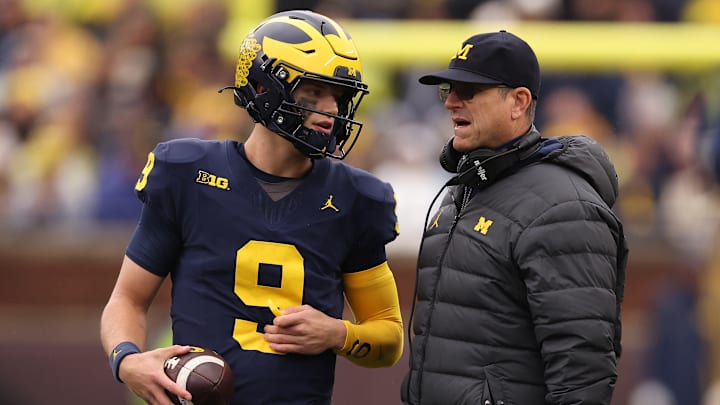Only a decade ago was the college football world defined by the BCS. The computers did their best to give us the two best teams in the country to play for a national championship. In some years, those widgets and gizmos did us right. But in others, oh, we were left battery-throwing mad. Look no further than undefeated Auburn getting left out of the title bout in 2004 under Tommy Tuberville's guidance.
So with debacles in 2004, 2007 and 2012, the BCS went away and the College Football Playoff emerged in 2014. No, this postseason determination setup has not been perfect, but it has always achieved what it sought out to do: Give us the four best teams to play in a three-game tournament. This format has led to far too many clunkers, as well as the little guy never seemingly having a shot.
Well, beginning next year, that all will be a moot point. We are getting a 12-teamer with automatic qualifiers and whatnot. It is going to be fantastic until we all get mad again at the system because that is what human beings were probably always meant to do. Regardless, can you even imagine how a national championship game would have been set up by using the antiquated BCS formula in 2023?
Turns out, this is your lucky day. The formula is still out there to once again prove how very wrong it is.
College football rankings for Week 8 based off the outdated BCS formula
Nick Schultz of On3 went in detail on what the top 25 would look like now based on the BCS formula.
- Michigan
- Ohio State
- Georgia
- Florida State
- Washington
- Oklahoma
- Penn State
- Texas
- Alabama
- North Carolina
- Oregon
- Ole Miss
- Oregon State
- Notre Dame
- Utah
- USC
- Tennessee
- LSU
- Duke
- Missouri
- Iowa
- Air Force
- Louisville
- James Madison
- Tulane
Upon first glance, most of the teams are in the right spot. Your top 15 feels like a top 15, so there is nothing to get riled up into a lather over right? Wrong. Oh no, no, no, no, no!!! If the season ended today, the BCS would have had Michigan playing Ohio State in Houston. If you really want to put Michigan No. 1, that is fine and I get it, but Ohio State at No. 2 over Georgia is absolutely ludicrous.
The BCS formula may take into account things like margin of victory and quality wins, but it does not give a damn about the eye test. Computers do not have eyes; people do. And therein lies the biggest problem with the BCS. Games are won on the field, not on a spreadsheet. In a world that is becoming increasingly analytical, some things must be solved with brawn over brains, such as college football.
In the current four-team format, most people would have teams like Florida State, Georgia and Michigan in, with other teams like Oklahoma, Penn State, Texas and Washington up for consideration for the last spot in. One of those other teams would have to include Ohio State, but keep in mind how flaky the Buckeyes have been this season. They still have to play Penn State and Michigan in-division.
What I always disliked about the BCS was it never seemed to consider the possibility that No. 3 or No. 4 could beat No. 1 or No. 2. In the first College Football Playoff, No. 4 Ohio State beat No. 1 Alabama in the Sugar Bowl before beating No. 2 Oregon for the national championship. Last year saw No. 3 TCU beat No. 2 Michigan in the Fiesta Bowl. The Horned Frogs would have never had a shot in the old BCS.
Ultimately, time is on our side to avoid this kind of rankings catastrophe. In due time, if Michigan and Ohio State emerge as the two best teams in the country, we can learn to accept that. I am sure a rematch will do wonders for ESPN's ratings. However, it is ridiculous at this point to think two teams from the same conference are clearly No. 1 and No. 2 when all five Power Five leagues are still in it.
With Ohio State hosting Penn State in The Horseshoe this weekend, one top-10 team is going down.
